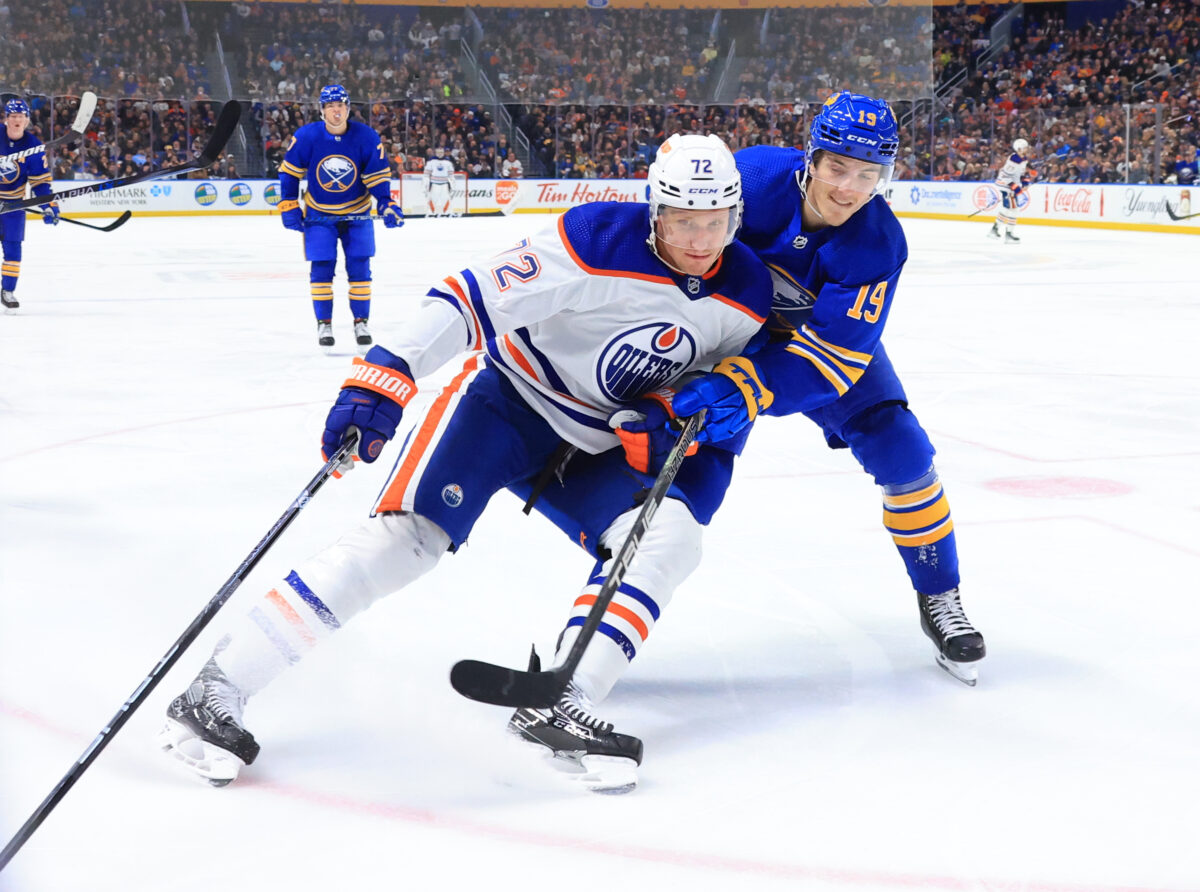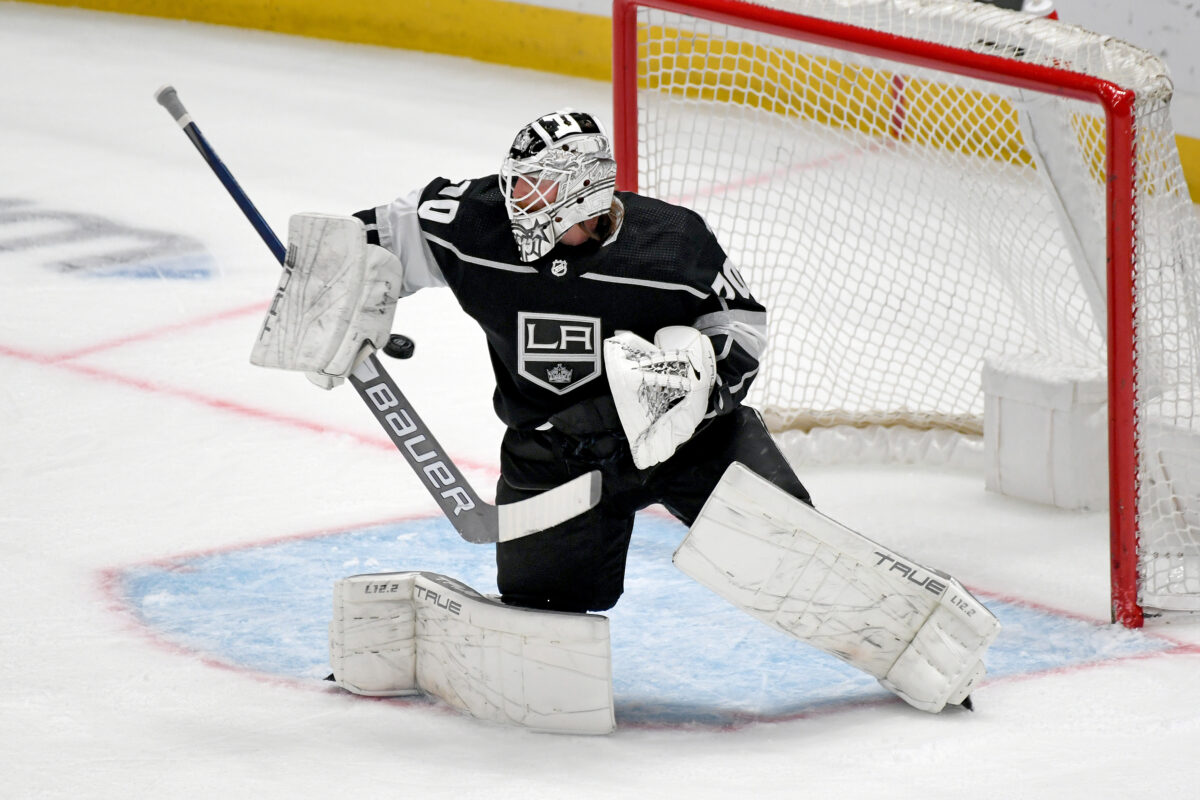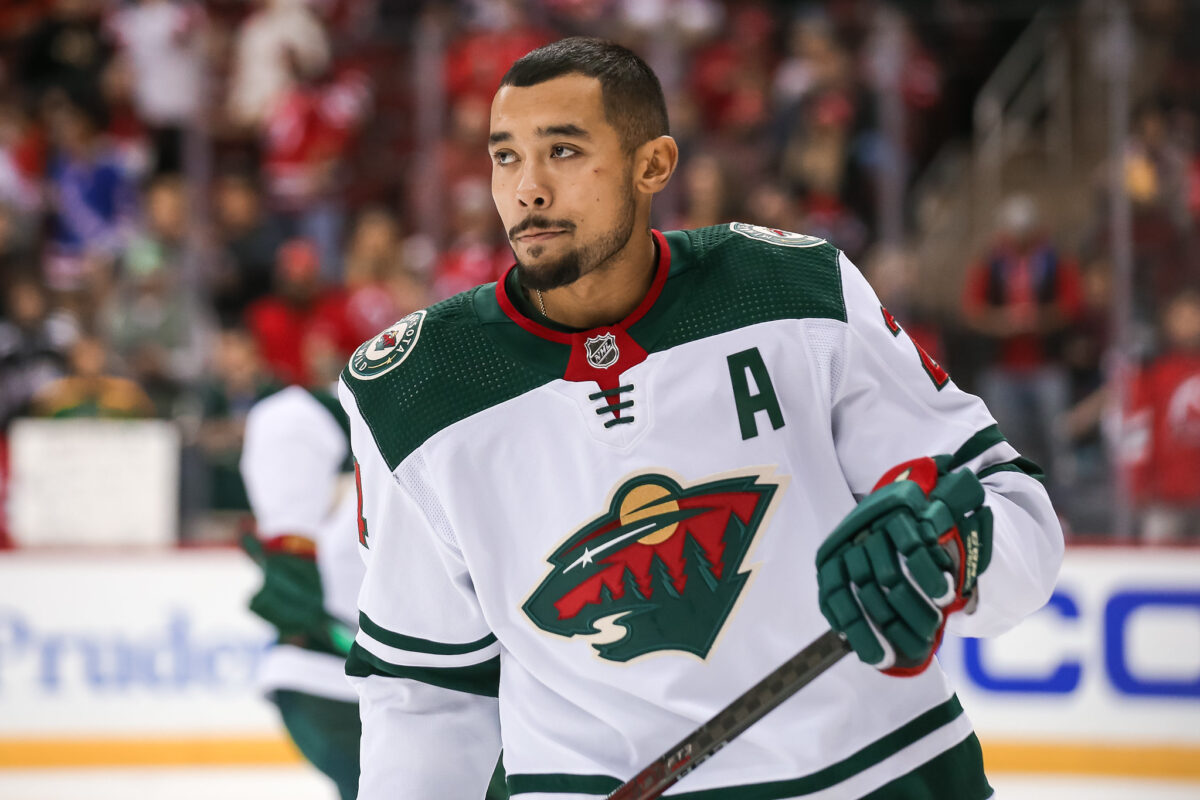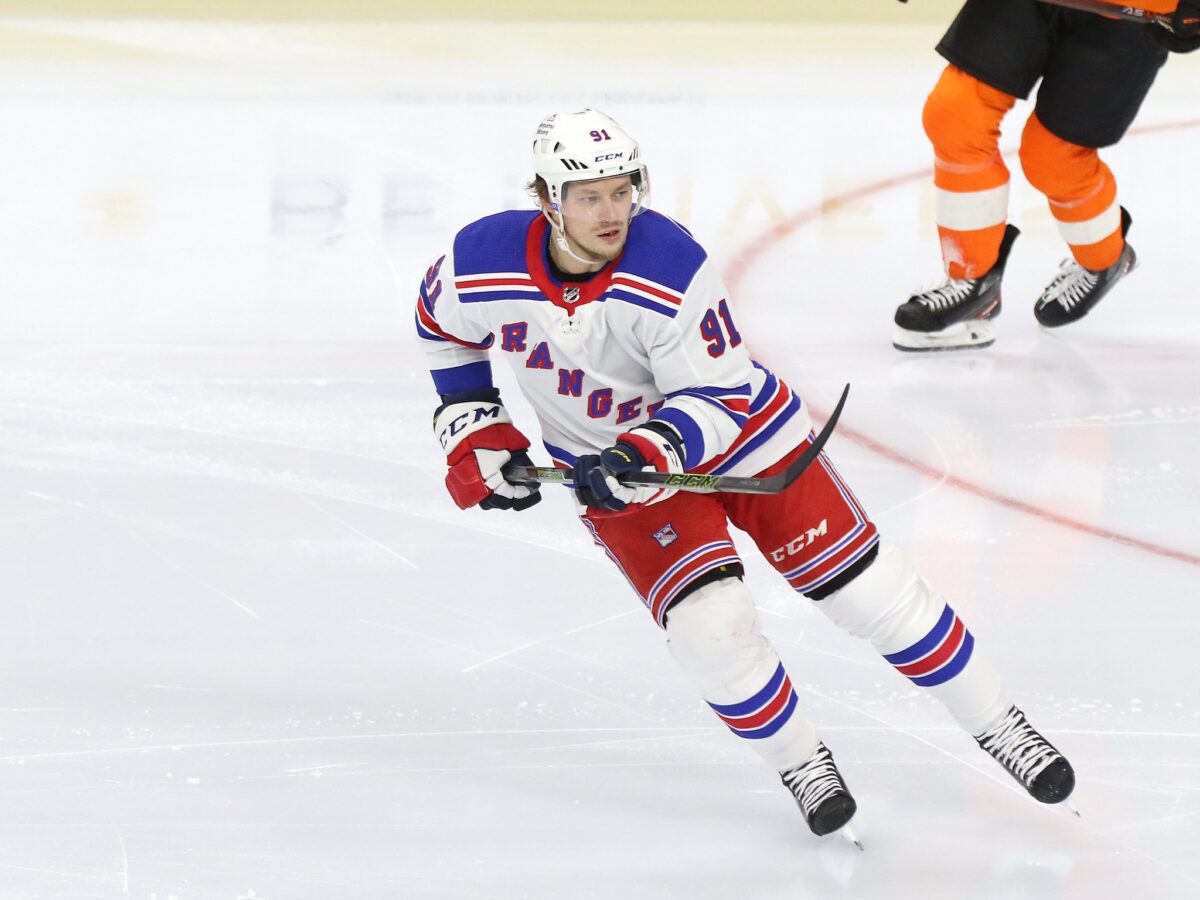Now that the 2023 NHL Draft is over, Steve Yzerman and the Detroit Red Wings will turn their focus to free agency. And while this year’s free agent class is relatively weak compared to prior years, there are players out there who can address Detroit’s organizational needs.
Yzerman already added Kailer Yamamoto and Klim Kostin to the fold after acquiring the two forwards from the Edmonton Oilers. Kostin, in particular, addresses one of Detroit’s offseason priorities – to become a more physical team.
As for Detroit’s other organizational needs, the players below have been identified as potential solutions based on a combination of talent, organizational fit, and contract expectations.
Red Wings’ Offseason Priority: Right-Handed Center
The Red Wings desperately need a right-handed center for the penalty kill. Opponents choose the faceoff location to start off the power play, and almost always pick the dot to the goalie’s right – the weak side of Detroit’s many left-handed centers.
Top Targets:
- Noel Acciari
- Nick Bjugstad
- J.T. Compher
- Luke Glendening
- Evan Rodrigues
Best Fit: Nick Bjugstad
Like the newly acquired Yamamoto, Bjugstad is a solid penalty killer and bottom sixer. He’s a role player, and nothing more.
The 6-foot-6 center would be a cost-effective signing, too. Rodrigues and Compher are bound to sign lucrative deals after playing meaningful roles for the Colorado Avalanche last season.

Bjugstad is likely looking at a series of one-year deals at this point in his career. If that is indeed the case, the Red Wings have the cap space to make him a competitive offer. My contract projection model suggests the bargaining range for a one-year contract would be between $1.27 million and $2.56 million. Detroit can offer near the top of that range without hampering their salary cap picture.
An additional note on Compher: He would be a good fit in Detroit. That said, he is going to command a long-term deal similar to the one Andrew Copp signed last summer (six years, $5.625 million AAV). In my opinion, he is not worth that kind of term and salary, and the Red Wings should not have two middle-six, complementary players taking up that much cap space.
Related: Red Wings Should Avoid These Prominent Free Agents
Red Wings’ Offseason Priority: 1B/Backup Goalie
Adin Hill is off the market and the Red Wings still need a reliable goalie to pair with Ville Husso. Detroit should consider co-starters, 1Bs, and straightforward backups.
Top Targets:
- Frederik Andersen
- Laurent Brossoit
- Joonas Korpisalo
- Antti Raanta
- David Rittich
Best Fit: Joonas Korpisalo
It’s difficult to quantify Korpisalo’s abilities given the fact that he has played behind some bad defenses with the Columbus Blue Jackets. But if you look the last two years his team reached the playoffs, his stats are actually pretty good:
- 2019-20 Blue Jackets – 2.60 GAA & .911 SV%
- 2022-23 Kings – 2.13 GAA & .921 SV%
The strongest case for signing Korpisalo is how he’d fit with the Red Wings. Like I said before, he’s played behind shaky defenses, so he understands how to process unpredictable play in front of him. This is a valuable trait for any goalie to have, especially while Detroit’s team defense continues to improve.

In addition, Korpisalo has experience serving as a backup and 1B. While this may not mean much to some, it’s an important attribute. You need to be consistent on an inconsistent basis. Every game needs to be your A-game, and you don’t know when you’re going to play next.
Korpisalo is in the second tier of goalies hitting the market this summer. Andersen and Tristan Jarry are at the top, along with Connor Hellebuyck who might be dealt. Because of this, term shouldn’t be an issue – two or three years at most. My contract projection model suggests the AAV bargaining range would be between $2.95 million and $4.09 million, though it views him more as a co-starter than a 1B or backup.
Red Wings’ Offseason Priority: Right Defenseman
As I mentioned in my draft-day trades piece, the Red Wings need a defenseman to skate with Simon Edvinsson on the second pair. Ideally, this blueliner can mentor Edvinsson and be a security blanket when Detroit’s top prospect joins the rush.
Unfortunately, there aren’t many defensemen out there qualified to play second-pairing minutes.
Top Targets:
- Connor Cilfton
- Matt Dumba
- Scott Mayfield
Best Fit: Matt Dumba
Frankly, Dumba is the best right defenseman on the market. Mayfield is fine. Clifton is more of a third-pairing blueliner. And others like Radko Gudas and John Klingberg are not fit to play second-pairing minutes. It’s simply a process of elimination that leads to Dumba.
That said, he brings value to the table. Dumba has been able to reinvent himself as a shutdown defenseman in Minnesota.

“Dumba’s offensive utility has waned, but in its place has come a newfound defensive presence — aided in part by shutdown partner Jonas Brodin,” noted The Athletic’s Dom Luszczyszyn (from ‘Top 50 NHL unrestricted free agents: From Ryan O’Reilly to Tyler Bertuzzi and more’ – The Athletic – 5/18/23).
“Dumba’s numbers have been excellent in that regard as a cog in the Minnesota machine and that stems from his ability to break the puck out. That’s his primary function on that pair and he thrives in the role in terms of retrieving pucks and getting them out safely. Dumba has one of the lowest failed exit rates in the league.”
Luszczyszyn also rated the defensive side of Dumba’s game at +2, which, when combined with his offensive rating, translates to a fringe first/second-pairing blueliner relative to the rest of the league.
How much would it take to sign Dumba? That’s an interesting question – his offensive contributions are mediocre, and that typically drives value. But on the other hand, he’s the top right defenseman available, so there’s likely going to be a bidding war.
Admittedly, my contract projection model appears to be torn on Dumba. Based on his comparables, it expects an AAV bargaining range of $2.6 million to $4.4 million for a four-year contract. Personally, I see him getting closer to the high end, if not higher due to current market conditions. The Red Wings can afford this, and Dumba is only 28. He’d essentially serve as a bridge until Axel Sandin Pellikka is ready for second-pairing minutes at the NHL level.
Red Wings’ Offseason Priority: Goal-Scoring Forward
From my year-over-year analysis of the Red Wings:
Believe it or not, Detroit’s five-on-five offensive numbers actually fell short of those produced under Jeff Blashill. Goals, expected goals, quality opportunities – they all declined year-over-year.
The key issue here is that the Red Wings struggled to get shots off. Not only on net, but shot attempts as well. In addition, they failed to produce quality chances at even strength – their 9.68 HDCF/60 ranked 31st in the NHL. Clearly, both the quantity and quality of shots were problematic for Detroit.
Plain and simple, the Red Wings need more shooters and goal-scorers. This is their top priority.
Top Targets:
- Tyler Bertuzzi
- Michael Bunting
- Max Pacioretty
- Vladimir Tarasenko
Best Fit: Vladimir Tarasenko
Why Tarasenko? He’s a former St. Louis Blue, that’s why.
But seriously, Tarasenko had outstanding chemistry with David Perron when the two were teammates in St. Louis. They combined to score 16 goals (48 total points) in just under 120 minutes of power play time together during the 2021-22 season. St. Louis’ power play ranked second in the NHL that year.

Whether it’s on the power play or at even strength, Tarasenko is a volume shooter with a top-notch release. Plus, he’s dangerous on the rush.
It’s unclear what Tarasenko covets in his next contract. Term? Total salary? It’s hard to imagine many teams offering four or more years to a 31-year-old with defensive issues.
So if Tarasenko is only getting short-term offers, the Red Wings can stand out by pitching a high-AAV deal. For a two-year deal, my contract projection model suggests a $5.85 million AAV. They can offer even more with a one-year contract if Tarasenko is open to such an arrangement.
Final Word
Yzerman said the Red Wings are still rebuilding. They are close, though. Adding players like those suggested above could be enough to push Detroit into a playoff spot.
The Red Wings should also consider trades to bring in long-term solutions. They have depth to part with, especially with Yamamoto and Kostin now on board.
